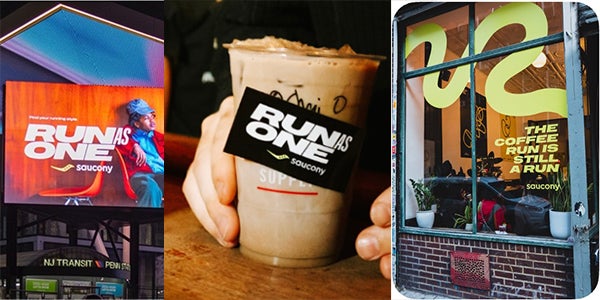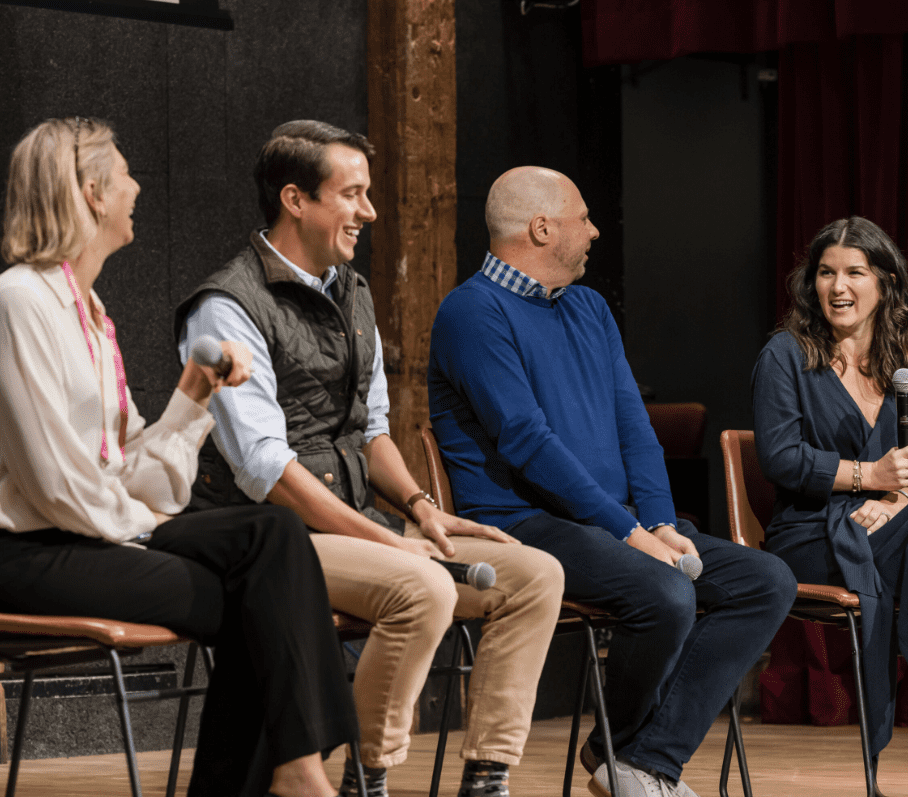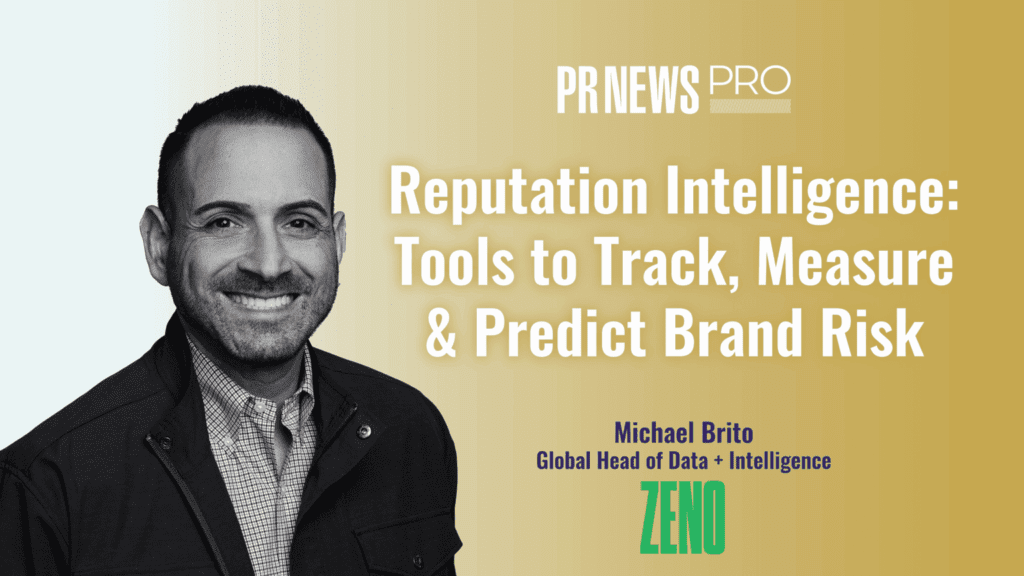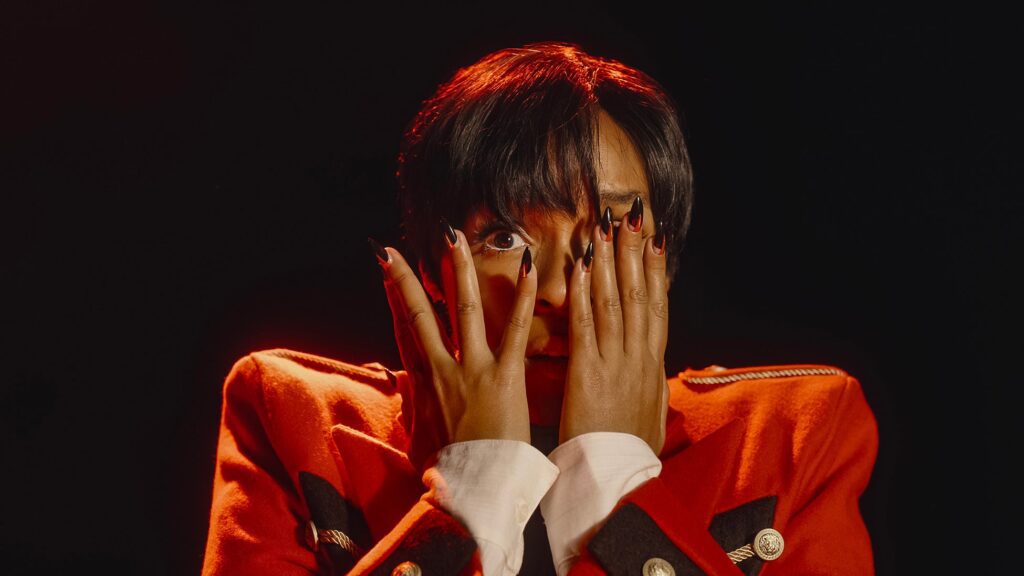Saucony launched the global brand campaign “Run As One” earlier this year with a 360 digital campaign, activations with run clubs, retail partnerships, athlete and creator collabs, and OOH advertising in select cities. By the end of May, the brand saw a 12 percentage point lift in brand awareness among 25- to 45-year-olds and an 18% increase in purchase consideration.
According to Saucony Global Chief Marketing Officer Joy Allen-Altimare, the brand continues to leverage its global presence among running enthusiasts to fulfill a dual purpose: present a unifying campaign that speaks to its specific consumer group through cultural activations and shift the perception of Saucony from a performance-only brand to a run lifestyle brand.
“The success came from our ability to tap into the emotional core of running not just as a sport, but more as a shared human experience. And I think that when we brought it to life through our global run events or our coffee shop residencies, it became like a powerful anthem … It moved from an advertising message to a movement that was resonating in community-first, story-rich, resonance across the globe.”
We spoke with Allen-Altimare about the campaign’s inspiration, community building, AI use cases, Saucony’s strategy for growth in 2026 and standing firm amid DEI industry rollbacks.
Chief Marketer: What was the motivation behind the “Run As One” campaign?

Joy Allen-Altimare, Global Chief Marketing Officer at Saucony: It was an opportunity for us to ground Saucony in a couple ways. One was we had never really had a unifying campaign that spoke to our consumer group. We’ve had different product-focused campaigns, but we wanted to create one Saucony approach globally and to make sure that while we did that we were still allowing room for our regional partners and regional teams to have space to make it more relevant to their market.
We did the research and wanted to dive deep into the universal truth that connects this consumer group, particularly as we aimed toward our second initiative, which is the shifting the perception of Saucony from being a performance-only brand to what we call run lifestyle. We’ve been around for 126 years and have historically been known as the go-to tool for core runners. And while we still leverage that heritage through our innovative product and the technology that we use in the shoes, from a higher-level emotional benefit, we wanted to create a brand that could resonate even with those modest runners or people who ground themselves in moving daily, or moving a couple times a week.
We wanted to talk about the higher emotional benefit of this idea of, we are running with you, we’re running for you. The success came from our ability to tap into the emotional core of running not just as a sport, but more as a shared human experience. And I think that when we brought it to life through our global run events or our coffee shop residencies, it became like a powerful anthem that started in the advertising with Vanessa Frazier, who’s one of our athletes, and Jae Tips, who was one of our collaborators. It moved from an advertising message to a movement that was resonating in community-first, story-rich, resonance across the globe. For us it was a core defining moment for 2025, because it moved us beyond just thinking about product-only storytelling into more big brand Saucony storytelling.
CM: Any results you can share? How did the campaign factor into the overall marketing strategy for the brands?
JA: We immediately saw lift, but we were happy to look at the actual data. We saw a 46% increase in branded search queries. We saw a 12 percentage point lift in brand awareness, specifically within 25- to 45-year-olds. Then obviously, because at the end of the day we need to drive conversion, we were super happy to see that from launch until the end of May, we saw an 18% increase in purchase consideration. So of those consumers who had never really thought about Saucony, 18% more of them were considering us as a brand for them.
CM: From an activation perspective, how did you get involved in communities?
JA: We looked at the media mix in a full funnel way. From an advertising perspective, precision and emotion were the two guarding rails. Our media mix was anchored in those digital places where we know the consumer shows up — CTV, online video, social display. We also invested in high-impact, high-visibility out of home, but in key cities like New York, Boston, Washington D.C., London and Paris. We did see a very strong ROI from our community-driven content and experiences that we created on that local level. The real unlock for us was how do we start at the top of the funnel and integrate that storytelling and pull it all the way to that local experience?
We had a strong local presence in key cities where we have the greatest distribution, but we wanted to add many more culture moments to those retail locations. As I mentioned, we had a coffee shop residency that started in June of last year. We did a coffee shop residency in Paris Fashion Week in ’24. We recreated that in Q1 of ’25, but expanded it in more markets. It was in New York, it was in Boston, all around key moments either in culture or running, but trying to expose the brand to those who had probably never seen it before and start to define what the brand is beyond that performance run-only culture and extend it to a larger running culture background.
I love the Boston Marathon example because one of our colleagues in the competitive set really owns Boston Marathon, so there’s not a lot of opportunity to have branded moments. But right at the finish line, we partnered with a coffee shop. And so every runner and every person who came to see a runner got to experience over the course of the weekend free coffee on us, but also learn about Saucony. We were able to have a pop-up shop for some of our key running shoes that we could sell. We were able to create this cultural moment that was still was rooted in running but extended beyond just that performance message.
View this post on Instagram
CM: You mentioned you had strong ROI at the community level. Can you share anything more about that?
JA: When we talk about activations … they’re not a one-off for us. We think about, what’s the global underpinning? For instance, when we launched “The Maze” earlier this year, we did it with an underground race in Europe that then resurfaced again in Brooklyn of this year. When we think about that activation holistically as a global team, the investment has made the ROI. We see it not only show up in the social equity, the social chatter; we see direct sales onto D-to-C every time we have these tentpole events. But they also have a greater currency for us because they provide an ongoing conversation with those consumers, either those who haven’t purchased or have just discovered us, or those who’ve been a part of the brand for a long time.
And that’s uber important to us as we think about creating brand loyalty. These ongoing conversations allow us to listen and show up to the consumer in ways that they expect and don’t expect sometimes, but we create those experiences that reflect the diversity and passion of the global run culture community. The underground race is a great example of that. And you extend way beyond just one market. In fact, we [had] one in Korea at the end of [September]. We take these franchise ideas to each market, and it’s always rooted in the emotion we want to drive, but also the product that we want consumers to discover and purchase.
Then there’s that higher emotional/social/equity currency that we get from it that is immeasurable in the sense of how it continues to live in the mindset of the consumer. And it influences them throughout the year and how they then move to purchase because they’ve been aware of the brand and they have gotten this emotional connection because of the activation moment that they shared with us. Obviously, we look at immediate sales lift, et cetera, but we also know it’s a long game. When you’re looking at building a brand, building brand recognition, building brand loyalty, it takes time.
CM: As you build this following and loyal community, how are you communicating to them during the activations and beyond?
JA: We leverage traditional advertising mechanisms, social, et cetera, but as we expand we partner with different local run clubs and run crews. I can’t mention them by name right now, but we just signed a couple in New York, a couple in LA and a couple in D.C. The authentic word of mouth that you get from that channel is immeasurable in a lot of ways. We do promote these moments in our own and shared channels, but it’s every day being local with these run clubs, supporting them, backing them … They are the heart of the community. They bring in all the consumers who we would love to discover us. And then it’s that shared experience that I talked about earlier that really connects the brand to the human that we are realizing is actually helping us drive greater energy and momentum.
CM: In terms of spreading the word about the brand, are there specific platforms, channels or communities that have been working well for you?
JA: Our advertising mix, as I said earlier, is anchored in digital. So a lot of social, a lot of digital-focused media. We have a great relationship with [run app] Strava, organically. We have close to a hundred thousand members that have joined. Strava itself is reaching that run-inspired consumer as well as the core runner. People are going on Strava, they’re sharing their daily runs, and we’ve been able to tap into it. We had a September 60 challenge on Strava; it drew a hundred thousand participants in over 169 countries. We’re continuing to leverage that platform to connect ourselves to this younger consumer who’s discovering run all the way to this consumer who has been running for a while and wants to build community.
The huge unlock is making sure that we’re showing up in authentic ways. I’ve been doing marketing for a long time. There’s always advantages to having the consumer or the audience provide the recommendation to their peers. And I think the advertising we put in the universe should reflect back to the consumer, what they’ve shown us. We’re trying [for] a nice balance between science and art. It’s not a perfect science and it’s not perfect art — but it’s the crux in between. And so we’ll continue to build authentic relationships through those mechanisms and then reflect back through our advertising and our brand work what we see the consumer sharing with us.
View this post on Instagram
CM: How are you differentiating yourself from competitors that are also targeting run groups? How hard is it to partner with these run crews that multiple sneaker brands may be looking into?
JA: It’s the same approach that we have with any type of partner, be it a collaborator or an advertising partner. The run crew universe — there’s a lot of them. And our brand is rooted in authenticity and collaboration. So we look for run crews and clubs that, number one, really want to partner with Saucony. That is a core lens through which we make these partnerships work. We have a specific personality/brand persona. When we look at run crews, we want those crews that want to work and partner not just with a run name shoe company, but Saucony. That helps us determine which ones make the most sense. And then we love the run crews that are full of different types of people.
Our core consumer is super diverse, super young, super eclectic. So when we see run crews full of creators, designers, artists, and we see how they interact, those are the run crews for us. It’s almost a perfect fit; we don’t have to compete to get their attention because they also are looking for a brand like us who recognizes and celebrates the diversity and inclusivity that they hold core to the way that they work. It takes a little bit more intentionality behind it, because sometimes it’s not the most popular one, but it’s a really cool one that people are interested in and loyal to — and they love Saucony.
CM: How are you using AI in your marketing, whether consumer-facing or within the marketing organization?
JA: For us, AI is an enablement tool that helps us move faster and smarter. We’re using it in a couple different ways. Number one, we’re using it to mine our data that we have — to understand who loves us today, [who is] possible to love us tomorrow, and the application of how to reach them. It is helping us create personalized consumer journeys, but it’s also helping us create from those segments personalization and content at scale so that we can drive relevant messaging, product recommendations, et cetera, across multiple channels. One of the most exciting use cases of AI is the predictive modeling piece that it has to it. Regardless of what platform you work on, at its most basic level, it helps us understand what consumers will want before they know themselves.
It helps us to figure out what dynamic content we should be sharing with them, and then how to optimize that over time. Obviously we are putting out media, and I think the media industry has really benefited from just being more efficient … so that we see a stronger, quicker ROI. We love that. Because yes, we’re creating a big brand at the top of the funnel, but we need to convert them. That’s usually leveraging some of those performance media tactics, and AI’s helping us optimize that space.
CM: Moving on to 2026 … What’s your strategy for growth?
JA: I can’t get so deep into it, but I’ll just say this: 2026 will be about deepening our lifestyle footprint, but making sure we don’t take our eye off the ball of our performance positioning and expanding our leadership within run performance. You’ll see new community-led campaigns, as I talked about. You’ll see us investing in more immersive experiences, either at retail or in community from a cultural perspective. You’ll see us leveraging more holistic storytelling that is rooted maybe in creator-led storytelling, more connected activations at the global level, and a sharper focus on our core consumer. We have heard from them that they see movement as an identity.
It’s also going to be a multi-pronged approach. We are going to continue to elevate what we call the core four franchises, which is Ride, Guide, Triumph and Hurricane. We’re going to look at Endorphin and making sure that we’re expanding our reach to the consumer around that particular franchise. You can expect to see us expand in new lifestyle territories and see acceleration within the D-to-C space. We launched our first Pioneering store a couple months ago in London. You can expect to see a strategy that helps us continue to tell our story at retail in that way in ’26 and ’27.
CM: A question about your background: Having been a Chief Revenue Officer at several companies, how has that informed your marketing strategy as a CMO?
JA: The time that I spent as a Chief Revenue Officer taught me how to speak to marketing not as just a creative function but as a growth [one]. And listen, we still have a way to go. The words “marketing creates demand” — we still need to educate our peers internally around what that actually means. When we say we create demand, we really mean that we are able to tap into a consumer mindset to accelerate the purchase lifecycle if we can deploy and manage all of the touchpoints that the consumer engages with.
But I’ve always been a marketer; that’s my core. I am truly attracted to the revenue officer ecosystem because it allows me to approach brand building with a commercial lens. Every day, when I’m working with my team, while we love the creative, my question is, how are we commercializing creative to drive conversion? It must drive value. So what it allows me to do is I lead with empathy and curiosity, but I understand that marketing is really about understanding people and revenue is about serving those people well.
CM: Do you have any perspective on the DEI rollbacks that are happening within companies this year? What is your brand’s perspective on it?
JA: The rollbacks of DEI across corporate America is deeply concerning. I’m a Black woman. So as a woman, as a person of color, it’s really concerning to see that the intentionality around treating equity within the workplace is being rolled back into some of our largest, most influential companies. I will say that what I found at Saucony and at [parent company] Wolverine in general is that there is a commitment to building inclusive brands and inclusive workplaces. That commitment goes a long way and it allows us to continue to be self-critical and continue to evolve and optimize some of the things that we’re doing so that we not only recruit, but we retain really great talent.
If you read anything about me, you know that I believe diversity is not a trend. It’s a universal truth. It’s a sound business decision to have diverse individuals in your organization because it drives innovation. When you have people internally that reflects the consumer base, it not only strengthens your culture, but it helps strengthen your go-to-market. As a leader, when you’re facing opposition around this core universal human truth, like inclusivity, leadership means standing firm — even with a tide shift. For me, and for those who look like me, we are focused on making sure that we don’t back down, but we double down on creating those environments that reflect the consumer that we’re going after, but also nurturing diverse talent — because in those inclusive environments is where you get some of the best, some of the smartest, some of the most creative ideas that make everybody feel good.






 Network
Network

